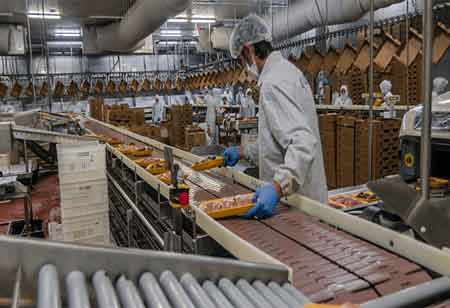Thank you for Subscribing to Food Business Review Weekly Brief
- Home
- Topics
- Alternative Proteins and Plant Based Food
- Beer and Wine
- Canned Beverages
- Coffee And Tea
- Food and Beverage Consulting
- Food and Beverage Financial Service
- Food And Beverages Marketing
- Food Distributors
- Food Ingredients
- Food Sustainability
- Plant Based Food and Beverages
- Seafood Suppliers
- Supplement Manufacturing
- Wine Investment
- News
- Vendor Viewpoint
- CXO Insights
- Conferences
- Newsletter
- CXO Awards
-
Glucosamine Supplement Manufacturing and Quality Control
Designing a glucosamine supplement manufacturing process involves raw material sourcing, purification, formulation.

By
Food Business Review | Friday, November 10, 2023
Stay ahead of the industry with exclusive feature stories on the top companies, expert insights and the latest news delivered straight to your inbox. Subscribe today.

Designing a glucosamine supplement manufacturing process involves raw material sourcing, purification, formulation, and precise dosage form production, with stringent quality control and record-keeping.
FREMONT, CA: The dietary supplement industry has witnessed significant growth in recent years, driven by the increasing demand for health and wellness improvements among individuals. Among the myriad of available supplements, glucosamine has garnered attention for its potential benefits in promoting joint health. Consequently, establishing a manufacturing facility for glucosamine supplements with a well-defined procedural layout and rigorous quality assurance protocols is crucial to ensure the creation of safe and effective products.
Process Design
Raw Material Procurement and Quality Control
The initial stage in the production of glucosamine supplements involves sourcing high-quality raw materials, which can include shellfish shells or synthetic glucosamine. Building reliable partnerships with suppliers capable of consistently delivering superior-grade components is of utmost importance. Stringent quality assurance procedures need to be in place to confirm the purity and authenticity of the raw materials. It is imperative to conduct assessments to detect any contaminants, heavy metals, and microbial content to ensure the quality and safety of the ingredients.
Extraction and Purification
The primary source of glucosamine is derived from shellfish shells, necessitating an extraction and purification process. This process involves breaking down the shells and isolating glucosamine from other compounds. The use of modern extraction methods, such as chromatography and filtration, ensures the production of a product characterised by high purity levels. Any remaining substances that may pose a risk to consumers must be thoroughly removed.
Formulation
After the purification process, glucosamine is combined with various other components like chondroitin or vitamins to create a comprehensive joint health supplement. Precise measurements and standardised formulations are essential to ensure consistent and effective production of these products.
Tablet or Capsule Production
Glucosamine supplements are manufactured in multiple formats, including tablets or capsules. The choice of the specific dosage form aligns with market demands and consumer preferences. Maintaining appropriate compression, uniformity, and disintegration attributes during tablet manufacturing is crucial for achieving precise dosing and effectiveness.
Quality Control Testing
Throughout each phase of the manufacturing process, the implementation of quality control assessments is essential. These evaluations include verifying ingredient identity, potency, and purity. Additionally, stability tests are conducted to ensure the product's continued effectiveness throughout its designated shelf life. To achieve accurate testing, modern analytical tools and methods, such as high-performance liquid chromatography (HPLC), are utilised.
Quality Control Measures
At the heart of quality control in the supplement production industry is the strict adherence to Good Manufacturing Practices (GMP) principles. These guidelines establish a structured framework for the manufacturing process, ensuring both the safety and consistency of the end product.
Documentation and Record-keeping
Thorough documentation is of utmost importance. It is crucial to maintain comprehensive records regarding the sourcing of raw materials, batch production, and the execution of quality control assessments. This recorded information plays a pivotal role in facilitating traceability and ensuring accountability.
The manufacturing of glucosamine supplements is a complex process that requires strict adherence to quality control measures and a robust process design. The quality and effectiveness of the final product depend heavily on the procurement of high-quality raw materials, the extraction and purification process, precise formulation, and the implementation of Good Manufacturing Practices. Quality control measures, including in-process testing, documentation, third-party testing, and adherence to regulatory guidelines, are essential to ensure product safety and consistency. By establishing a manufacturing plant with these principles in mind, companies can produce glucosamine supplements that meet consumer expectations and contribute to joint health and well-being






